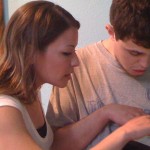Are you a parent (or educator) of a pre-teen or teen? Do you wonder about how and when to explain puberty to your growing child? Are you at a loss about what to explain about the birds and the bees? Are you wondering what an ITP is and how to best prepare your child or student for adult life? Then the course Adolescents on the Autism Spectrum is for you.
Based on the award-winning book, more recent information, and Chantal Sicile-Kira’s popular national presentations, this interactive course will be taught on-line to a small group on Tuesday August 28, Wednesday August 29, Thursday August 30; from 6:00 pm to 8:00 pm PST (9:00-11:00 EST) for a fee. To sign up, go here. Instructions will be sent to you within 24 hours of sign up.
The cost for the 6 hour- course over three days is $99.00 and provides:
- 6 hours of training
- PowerPoints provided before the webinars to help with note taking.
- The basics on what you need to know when your child or student (of different ability levels) is a pre-teen or teenager
- Resources for more information on various topics
- Opportunity for the participants to write in or call in their questions to Chantal.
- BONUS: Written transcript booklet from the original live course provided in March will be provided to those who sign up (a $39.00 value – see description in the Autism College store)
- BONUS: Opportunity to watch replay of webinar at a later date (convenient if you miss a session).
Topics to be covered during the 6 hours include:
Adolescence 101: The Teen Basics :Everything you need to know (but don’t know who to ask)
- 13 things every parent or educator needs to know
- The general challenges faced by ASD teenagers
- Sensory processing challenges in adolescence
- Functional strategies to help with daily transitions
- Family and sibling concerns
- Teaching about puberty
- Hygiene and self-care
- Masturbation
Adolescence 102: Relationships: It’s Complicated
- The notion of privacy and consent
- Relationship boundaries
- Sexuality
- Self awareness
- Self- regulation
- Bullying
- Interdependence
Adolescence 103: The Transition Years: Plan, Prepare, Practice for the Real World of Adult Life
- Preparing the transition to High school
- The ITP- Individual Transition Program and IEPs
- Teaching life skills needed for work and / or college: self-esteem, self-advocacy, executive functioning, self-reliance
- Building on strengths
- The use of mentors
Sign up now to reserve your spot! Questions? Send us an email!







